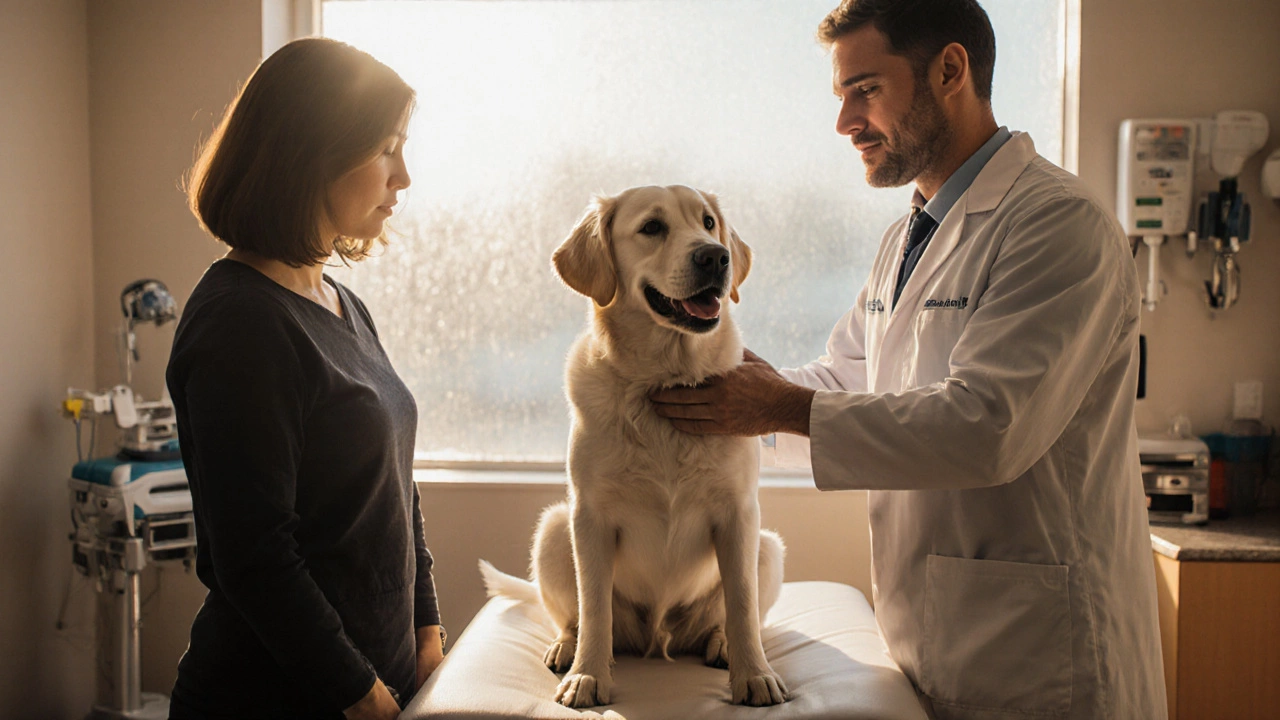Dog Vaccination Cons: Understanding the Risks and Realities
When talking about Dog Vaccination, the process of giving a dog a vaccine to protect against contagious diseases. Also known as canine immunization, it is a cornerstone of preventive pet health but comes with its own set of challenges. Adverse Reaction, any unwanted side effect after a vaccine is administered is one of the most talked‑about concerns, especially when owners notice fever, swelling, or lethargy. Another key player is the Vaccination Schedule, the timing and frequency of each required or optional vaccine, which can be confusing and sometimes pushes dogs into unnecessary boosters. Finally, Veterinary Guidance, professional advice from a qualified vet on what, when, and why to vaccinate shapes every decision, linking the other three entities together. In short, dog vaccination cons involve balancing protection with potential side effects, schedule overload, and the quality of professional counsel.
Key Considerations Before You Vaccinate
First, understand that not all vaccines carry the same risk profile. Core vaccines—like those for rabies and parvovirus—are generally considered essential, while non‑core options such as Bordetella or leptospirosis may be optional based on lifestyle. The entity relationship here is clear: the type of vaccine (core vs. non‑core) influences the likelihood of an Adverse Reaction. Second, the timing of each shot matters; puppies receive a series of doses over several weeks, and adults often need boosters. Over‑vaccinating can strain a dog’s immune system, leading to chronic inflammation or even autoimmune issues. Third, owners should weigh their dog’s health history. Dogs with pre‑existing conditions, allergies, or a history of strong reactions need a customized Vaccination Schedule crafted by a trusted vet. This connection—health status affects schedule—helps prevent unnecessary exposure.
Third, cost and convenience sometimes push owners toward “one‑size‑fits‑all” clinic packages, but those bundles can bundle unnecessary shots. A savvy pet parent asks: is each vaccine truly needed for my dog’s environment and risk level? By asking that question, you’re directly linking Veterinary Guidance to cost‑benefit analysis. Fourth, be aware of the legal side. Some regions require rabies vaccination for licensing, while other vaccines remain voluntary. Understanding the legal mandate prevents surprise fines and ensures you’re complying without extra risk. Finally, post‑vaccination monitoring is critical. Simple steps—checking the injection site, noting behavior changes, and contacting your vet if anything seems off—can catch an Adverse Reaction early, reducing complications.
The collection of articles below dives deeper into these topics. You’ll find practical tips on calming anxious dogs during vet visits, alternatives to shock collars that keep training stress low, and how to set up safe travel environments—all of which intersect with the vaccination conversation because a calm, healthy dog is less likely to experience severe side effects. Whether you’re a first‑time owner trying to decode the vaccination schedule or a seasoned pet parent weighing the pros and cons of an extra booster, the posts ahead give you actionable insight to make informed, balanced decisions about your dog’s immunity and overall well‑being.
Dog Vaccination Risks: Key Cons Every Owner Should Know
Explore the downsides of dog vaccination, from mild side effects to rare severe reactions, and learn how to protect your pet while minimizing risks.






